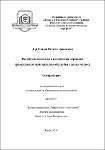I hereby declare that I will use the electronic library contents in compliance with COPYRIGHT AND RELATED RIGHTS ACT, Article 24, paragraph 1, item 9, only for scientific, cultural and educational purposes, without commercial gain, without commercial interest and non-profit.No Yes

Vestibuloplasty Using Xenodermal Graft / Вестибулопластика с ксеногенен дермален трансплантат

Date
2019Author
Dzhongova, Elitsa
Джонгова, Елица
elica.djongova@mu-varna.bg
Metadata
Show full item recordAbstract
Vestibuloplasty is the surgical procedure whereby the oral vestibule is deepened by changing the soft tissue attachments. The aim of vestibuloplasty is to increase the bone amount and the attached mucosa, so that the available bone would ensure proper support and stability of dental prostheses. Vestibuloplasty techniques with secondary epithelialization are often marked with a slow healing process, discomfort and relapses. It is, therefore, advisable to use epithelial grafts for covering the exposed wound surface in order to prevent the formation of exuberant granulation tissue and accelerate the healing process. The disadvantages of the most widely used autogenous grafts are associated with the additional trauma a patient suffers from the second wound area formed after the harvesting. Among other downsides of this technique are the duration of surgery, discrepancies in the tissue colour and texture of the recipient site.
In order to overcome the above-said disadvantages, it is common practice to apply various allogeneic and xenogeneic grafts over the wound surface. Вестибулопластиката представлява хирургична процедура за увеличаване на дълбочината на устния вестибулум чрез промяна в мекотъканното прикрепване. При методите на вестибулопластика с вторична епителизация често се наблюдава забавен задравителен процес, дискомфорт и рецидиви. Затова се препоръчва използването на епителни трансплантати за покриване на откритата ранева повърхност, а това води до намаляване на количеството на гранулационната тъкан и ускоряване на заздравителния процес. Автогенните трансплантати водят до допълнителна травма за пациента от създаване на втора ранева повърхност за добиването им, удължаване на оперативното време, несъответствие с цвят и текстура с приемната ложа. За да се преодолеят тези недостатъци, в практиката са били прилагани различни ало- и ксеногенни трансплантати за покриване на раневата повърхност.
Целта на настоящото изследване е да се оптимизира процеса на зарастване на следоперативната мекотъканна рана след вестибулопластика с използването на ксеногенен трансплантат.
